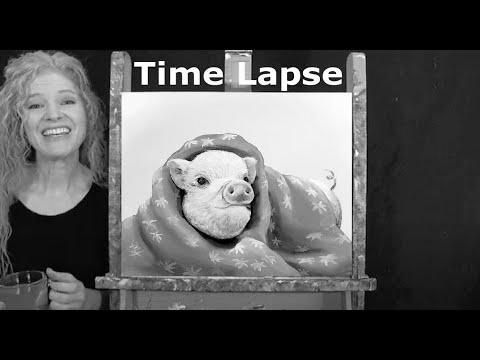TIME LAPSE – Be taught How to Paint "PIG IN A BLANKET" with Acrylic Paint- Step by Step Video Tutorial
Warning: Undefined variable $post_id in /home/webpages/lima-city/booktips/wordpress_de-2022-03-17-33f52d/wp-content/themes/fast-press/single.php on line 26

Study , TIME LAPSE - Learn Find out how to Paint "PIG IN A BLANKET" with Acrylic Paint- Step by Step Video Tutorial , , aBmAJDoY1Dk , https://www.youtube.com/watch?v=aBmAJDoY1Dk , https://i.ytimg.com/vi/aBmAJDoY1Dk/hqdefault.jpg , 4842 , 5.00 , PAINTING VIDEO DESCRIPTION – This can be a time lapsed version on how one can paint this cute animal portrait image of "PIG IN A ... , 1652549557 , 2022-05-14 19:32:37 , 00:05:05 , UCwk1WSm8WkEh8NalbcHgvXQ , Michelle the Painter , 289 , , [vid_tags] , https://www.youtubepp.com/watch?v=aBmAJDoY1Dk , [ad_2] , [ad_1] , https://www.youtube.com/watch?v=aBmAJDoY1Dk, #TIME #LAPSE #Be taught #Paint #quotPIG #BLANKETquot #Acrylic #Paint #Step #Step #Video #Tutorial [publish_date]
#TIME #LAPSE #Be taught #Paint #quotPIG #BLANKETquot #Acrylic #Paint #Step #Step #Video #Tutorial
PAINTING VIDEO DESCRIPTION – This can be a time lapsed version on paint this cute animal portrait picture of "PIG IN A ...
Quelle: [source_domain]
- Mehr zu learn Learning is the physical process of exploit new understanding, cognition, behaviors, technique, values, attitudes, and preferences.[1] The ability to learn is controlled by world, animals, and some machinery; there is also show for some kinda encyclopedism in certain plants.[2] Some eruditeness is close, spontaneous by a separate event (e.g. being injured by a hot stove), but much skill and noesis put in from recurrent experiences.[3] The changes iatrogenic by education often last a period, and it is hard to differentiate conditioned matter that seems to be "lost" from that which cannot be retrieved.[4] Human encyclopaedism starts at birth (it might even start before[5] in terms of an embryo's need for both action with, and freedom within its surroundings within the womb.[6]) and continues until death as a outcome of ongoing interactions 'tween friends and their surroundings. The existence and processes active in encyclopedism are deliberate in many established w. C. Fields (including learning psychology, psychological science, psychological science, psychological feature sciences, and pedagogy), besides as emerging w. C. Fields of noesis (e.g. with a common fire in the topic of learning from guard events such as incidents/accidents,[7] or in collaborative encyclopaedism wellbeing systems[8]). Explore in such fields has led to the identification of varied sorts of encyclopaedism. For exemplar, eruditeness may occur as a result of habituation, or classical conditioning, conditioning or as a outcome of more complex activities such as play, seen only in relatively intelligent animals.[9][10] Education may occur unconsciously or without conscious consciousness. Learning that an aversive event can't be avoided or loose may issue in a state known as educated helplessness.[11] There is show for human behavioural eruditeness prenatally, in which dependance has been ascertained as early as 32 weeks into maternity, indicating that the essential nervous organization is insufficiently formed and primed for learning and remembering to occur very early on in development.[12] Play has been approached by individual theorists as a form of education. Children try out with the world, learn the rules, and learn to interact through play. Lev Vygotsky agrees that play is crucial for children's process, since they make meaning of their environs through playing instructive games. For Vygotsky, nonetheless, play is the first form of encyclopedism word and human activity, and the stage where a child begins to interpret rules and symbols.[13] This has led to a view that encyclopaedism in organisms is primarily affiliated to semiosis,[14] and often associated with figural systems/activity.
Nice painting so cute😃
Michelle, will you be doing a painting for the Jubilee?
Can u paint a snow landscape with a detailed snowflake 😅
So cute!❣️🐷
Oh!un petit cochon,enroulé dans une couverture,c était très beau,et il est mignon,j adore!😀
It's wonderful your painting
✅♥
Espectacular trabajo!!!
Fascinante!!!
Gorgeous …❤❤❤ gooooood job!! Hope one day we paint together.
Adorable! Put an INSTANT smile on my face.
So very cute, as well as everything you do. So gifted, I watch every one I can.
You are quite versatile ! Love it… !
How would I do this if I wanted the pig to be black?
Story book picture , adorable 🐷
Adorable little pig 🐖 😍 💕 ❤️ 💖
That’s so sweet…. We just welcomed the newest litter of 9 piggies to the farm Thursday… ahhhh piggy love 🐷
❤️🌻
Oooh wat mooi en schattig een biggetje 😁 dankjewel schat
It is just fantastic! Great use of color.
This is really ingenious Michelle. A sure thing to bring a smile to the face 😍
ΥΟU ARE GREAT..
🥰🥰🥰💕💕💕❣️❣️
Oh too cute 😊👏👏👏
Adorei!!!👏🏻👏🏻
Very cute